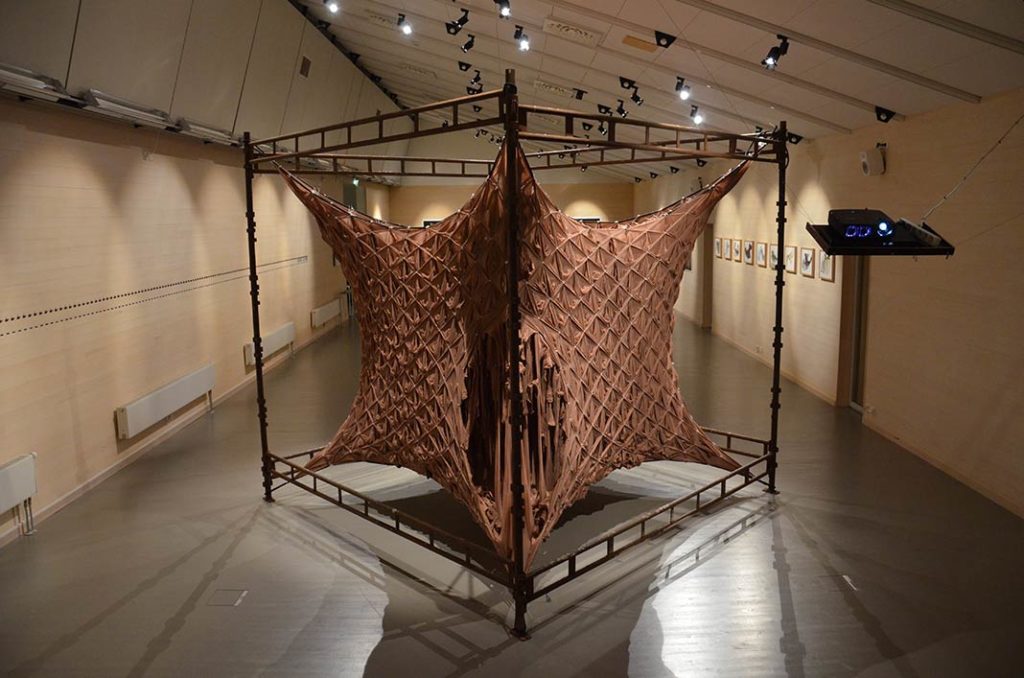
Design studio NEON has unveiled its latest project “Skin” as part of an exhibition entitled 5 Islands at the Archipelago Centre in Korpoström, Finland.
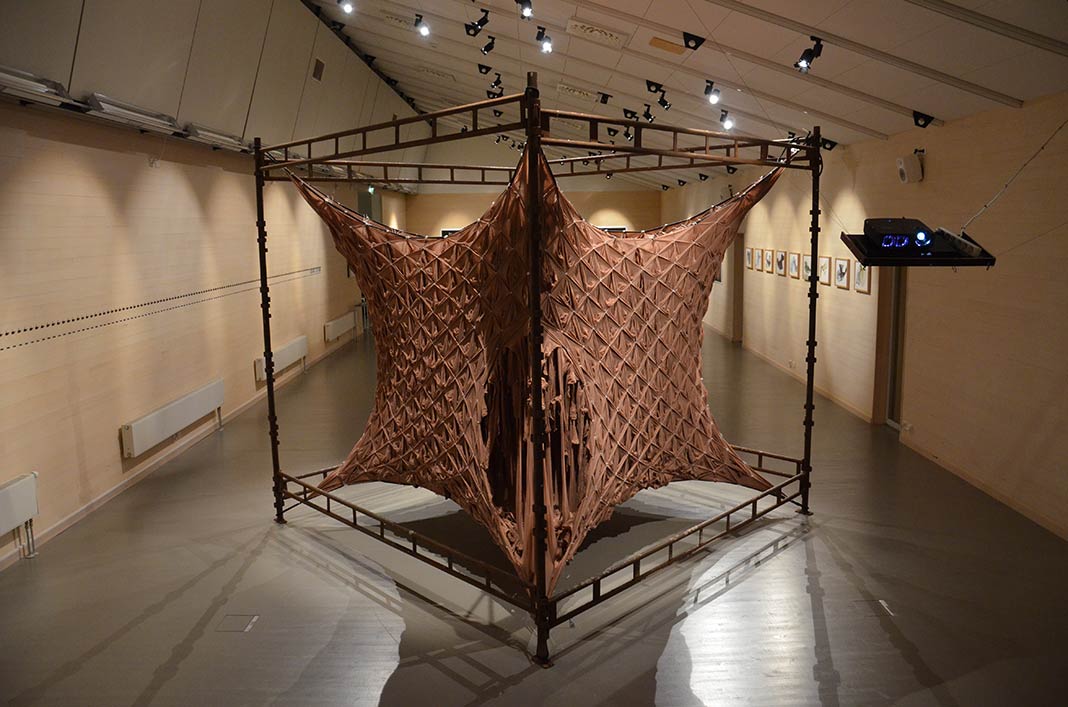
The exhibition will run between 15.10.2016 - 17.4.2017 and features 5 different artists responding to the unique context of the Finnish Archipelagos. This is NEON’s second project in Finland following on from 2015’s Shiver House which explored the relationship between man, nature and architecture.
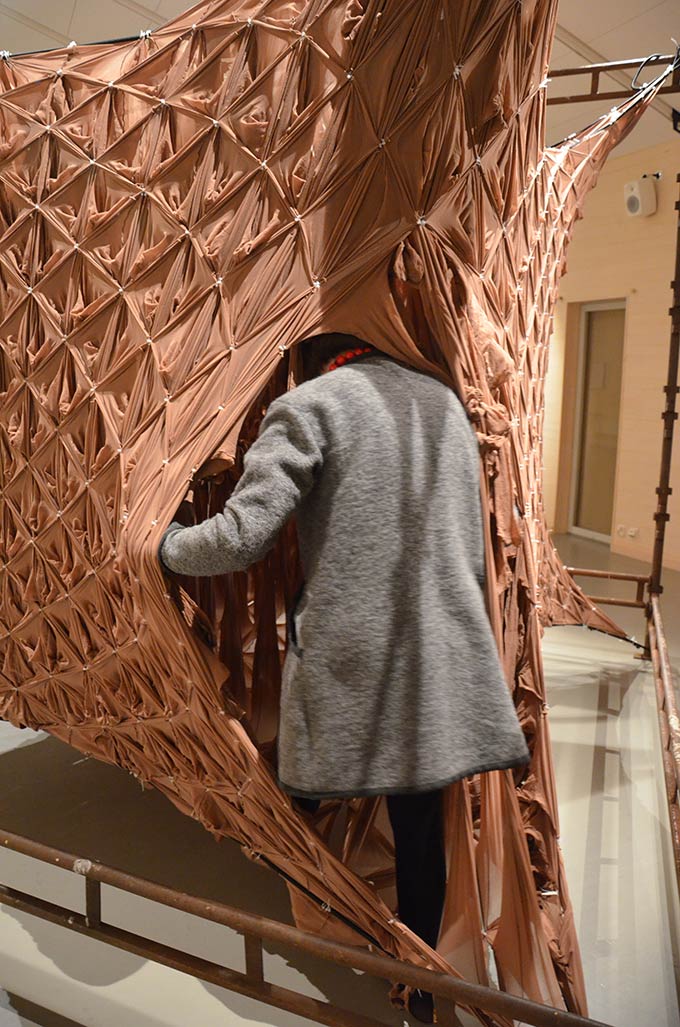
“Skin” is designed as a critique of modernist architecture. As the regeneration of our cities becomes ever more “developer led”, architecture has become increasingly “efficient” in order to maximize the financial returns on investment. Buildings are designed according to strict guidelines and minimum dimensions, wall thicknesses are reduced in depth and in terms of their ornamentation. The human experience has become severely neglected in the design conversation. This architectural approach is highly prevalent in Finland which was a heavy adopter of “Functionalism”.
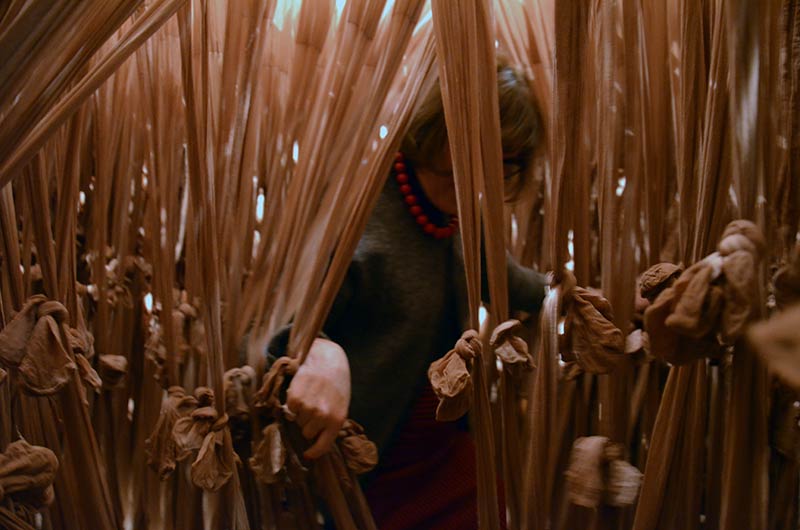
Skin is an inhabitable sculpture that speculates on an alternative architectural approach, one that prioritises the human body over all other design parameters. The body is used as the aesthetic driver for the sculpture, its form, constructed from skin coloured tights, appears from afar like a stretched and distorted piece of flesh. From within the sculpture also imitates the aesthetic of human flesh to create a feeling of immersion with the inhabitant losing all sense of where their body ends and architecture begins. It is intended that this approach will create a strong physical and emotional connection between the inhabitant and the architectural space. This sense of being physically and emotionally present is particularly important in a world where technologies continue to erode our sense of personal space.
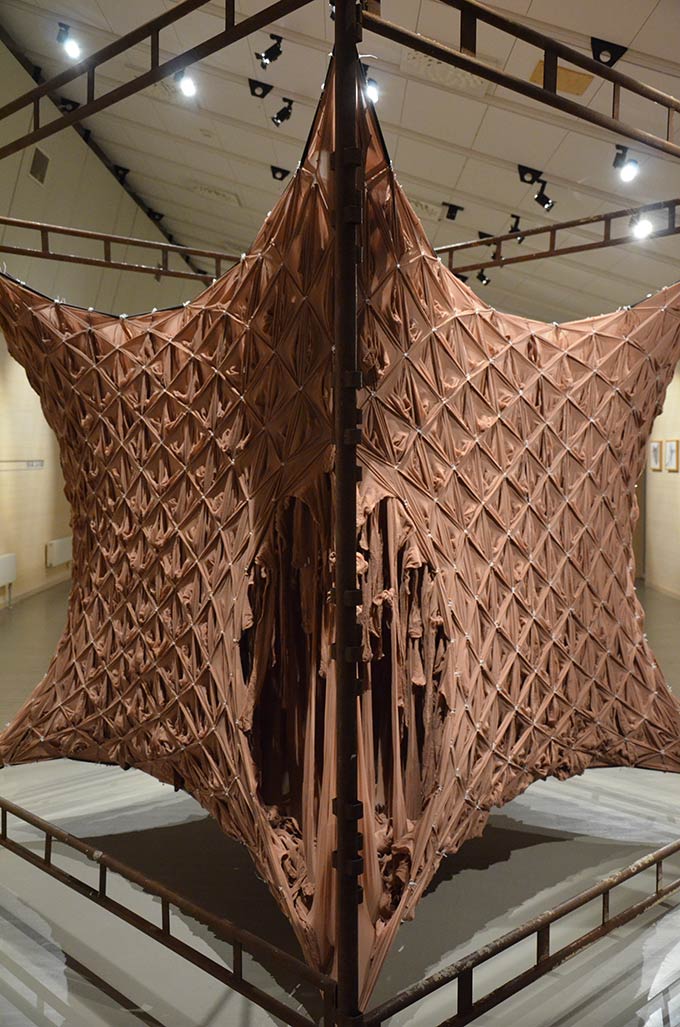
Skin is constructed using 1800 pairs of natural skin coloured tights which are arranged at the waist in a grid to form 6 identical sides. The sides are linked to form a cube with volume created by stretching the corners in tension using a steel frame. There is a “slit” opening at one corner of the form to allow the visitor to enter the elasticated space. Inside the sculpture, the legs of the tights in the ceiling are connected to the legs of the tights in the floor which means that the movement of the body inside will distort and affect the overall form. The vertically connected legs allow a free movement through the space but limit the occupant’s vision meaning the work may only be experienced fully by moving around it.
[…] the artist’s first public sculpture, and in direct response to the pervasive Confederate monuments throughout the United […]